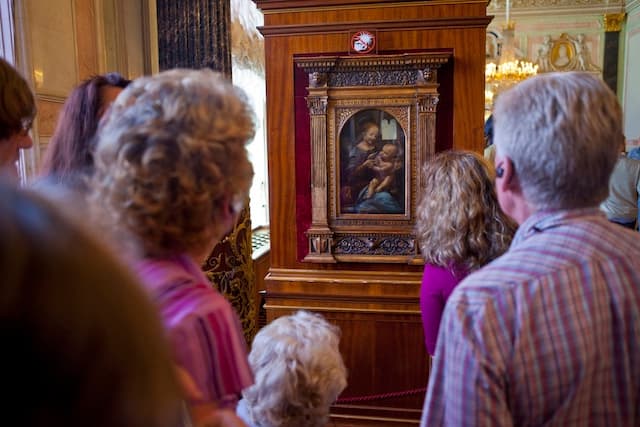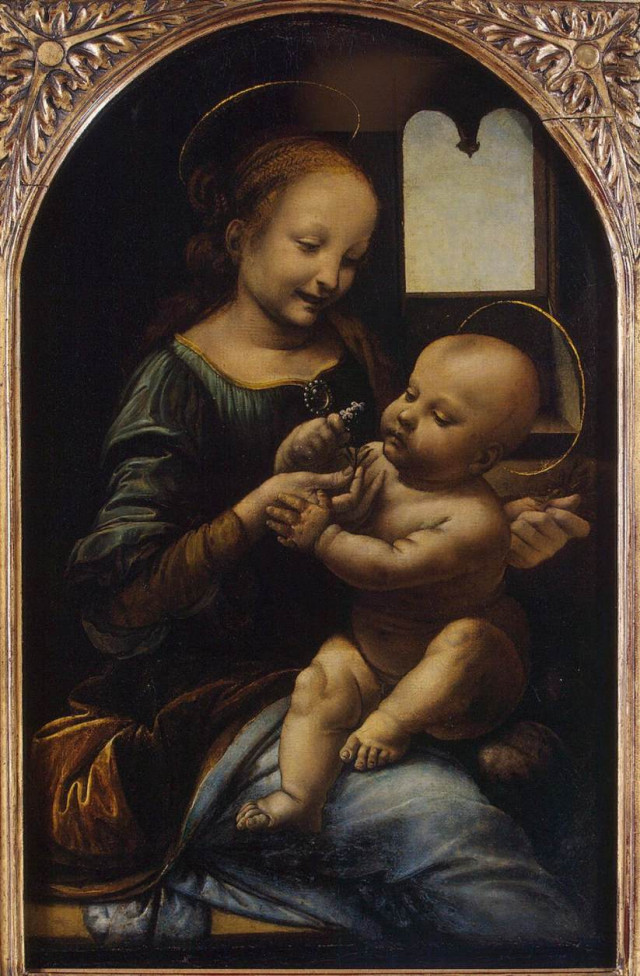Leonardo Da Vinci's Benois Madonna to make rare return to Italy

One of Leonardo Da Vinci's earliest paintings, the Benois Madonna, is to return to Italy next month for only the second time in 200 years, in honour of the artist's 500th anniversary.
Also known as the Madonna and Child with Flowers, the painting will go on display in two museums in central Italy for a total of two months.
The picture is on loan from the Hermitage Museum in St Petersburg, where it has hung for most of the past 100 years. Bought by a Russian collector in the late 18th century, since then it has returned to Italy just once before, for an exhibition at the Uffizi Gallery in Florence in 1984.
READ ALSO: In the footsteps of genius: A travel guide to Leonardo Da Vinci's Italy
While most would expect the star exhibit to go on show in one of Italy's biggest museums, it will instead hang in the town art gallery in Fabriano, a small city in the Marche region, from June 1st-30th, before moving to the Umbrian National Gallery in Perugia for the month of July.
The surprising choice is partly to coincide with a meeting of Unesco's 'Creative Cities' network taking place in Fabriano in June, but also because "in Italy there are no towns that aren't worthy of hosting great works of art, dotted as it is with villages that house unique artistic treasures", commented the Hermitage's director, Mikhail Piotrovsky.
The museum is keen to give Italians "the chance to see the work of the world's greatest artists back at home", he said.

Leonardo is thought to have been around 25 when he painted the intimate portrait, which measures just 49.5 by 33 centimetres. It shows the infant Jesus absorbed by a sprig of flowers held out to him by his mother in a touchingly realistic moment.
It is believed to be one of the first works that Leonardo composed and painted on his own without the guidance of his master, the Florentine painter and sculptor Andrea del Verrocchio. Several other artists subsequently copied the scene, most famously Raphael in his Madonna of the Pinks.
The Benois Madonna gets its name from the Russian family who sold it to the Hermitage in 1914. The story goes that they purchased it from a troupe of Italian circus performers, though a more likely account says that they bought it at auction from the estate of art collector Alexei Korsakov, who is believed to have brought it to Russia from Italy in the 1790s.
The exhibition is one of hundreds of special events in Italy throughout the year to mark the 500th anniversary of Da Vinci's death, on May 2nd 1519.
READ ALSO:
Comments
See Also
Also known as the Madonna and Child with Flowers, the painting will go on display in two museums in central Italy for a total of two months.
The picture is on loan from the Hermitage Museum in St Petersburg, where it has hung for most of the past 100 years. Bought by a Russian collector in the late 18th century, since then it has returned to Italy just once before, for an exhibition at the Uffizi Gallery in Florence in 1984.
READ ALSO: In the footsteps of genius: A travel guide to Leonardo Da Vinci's Italy
While most would expect the star exhibit to go on show in one of Italy's biggest museums, it will instead hang in the town art gallery in Fabriano, a small city in the Marche region, from June 1st-30th, before moving to the Umbrian National Gallery in Perugia for the month of July.
The surprising choice is partly to coincide with a meeting of Unesco's 'Creative Cities' network taking place in Fabriano in June, but also because "in Italy there are no towns that aren't worthy of hosting great works of art, dotted as it is with villages that house unique artistic treasures", commented the Hermitage's director, Mikhail Piotrovsky.
The museum is keen to give Italians "the chance to see the work of the world's greatest artists back at home", he said.

Leonardo is thought to have been around 25 when he painted the intimate portrait, which measures just 49.5 by 33 centimetres. It shows the infant Jesus absorbed by a sprig of flowers held out to him by his mother in a touchingly realistic moment.
It is believed to be one of the first works that Leonardo composed and painted on his own without the guidance of his master, the Florentine painter and sculptor Andrea del Verrocchio. Several other artists subsequently copied the scene, most famously Raphael in his Madonna of the Pinks.
The Benois Madonna gets its name from the Russian family who sold it to the Hermitage in 1914. The story goes that they purchased it from a troupe of Italian circus performers, though a more likely account says that they bought it at auction from the estate of art collector Alexei Korsakov, who is believed to have brought it to Russia from Italy in the 1790s.
The exhibition is one of hundreds of special events in Italy throughout the year to mark the 500th anniversary of Da Vinci's death, on May 2nd 1519.
READ ALSO:
Join the conversation in our comments section below. Share your own views and experience and if you have a question or suggestion for our journalists then email us at [email protected].
Please keep comments civil, constructive and on topic – and make sure to read our terms of use before getting involved.
Please log in here to leave a comment.